
So you have decided to finally start pursuing your artificial grass project. But where do you even start? Below, we will walk you through some dos and don'ts when...
Are you unsure about the size of turf rolls you need for your artificial grass? Don't worry, we've got you covered! In this article, we'll guide you on how to determine the right amount of artificial turf, help you choose the most optimal cuts, and even provide practical use cases. Keep reading to also discover some handy tips and tricks for easy hauling!
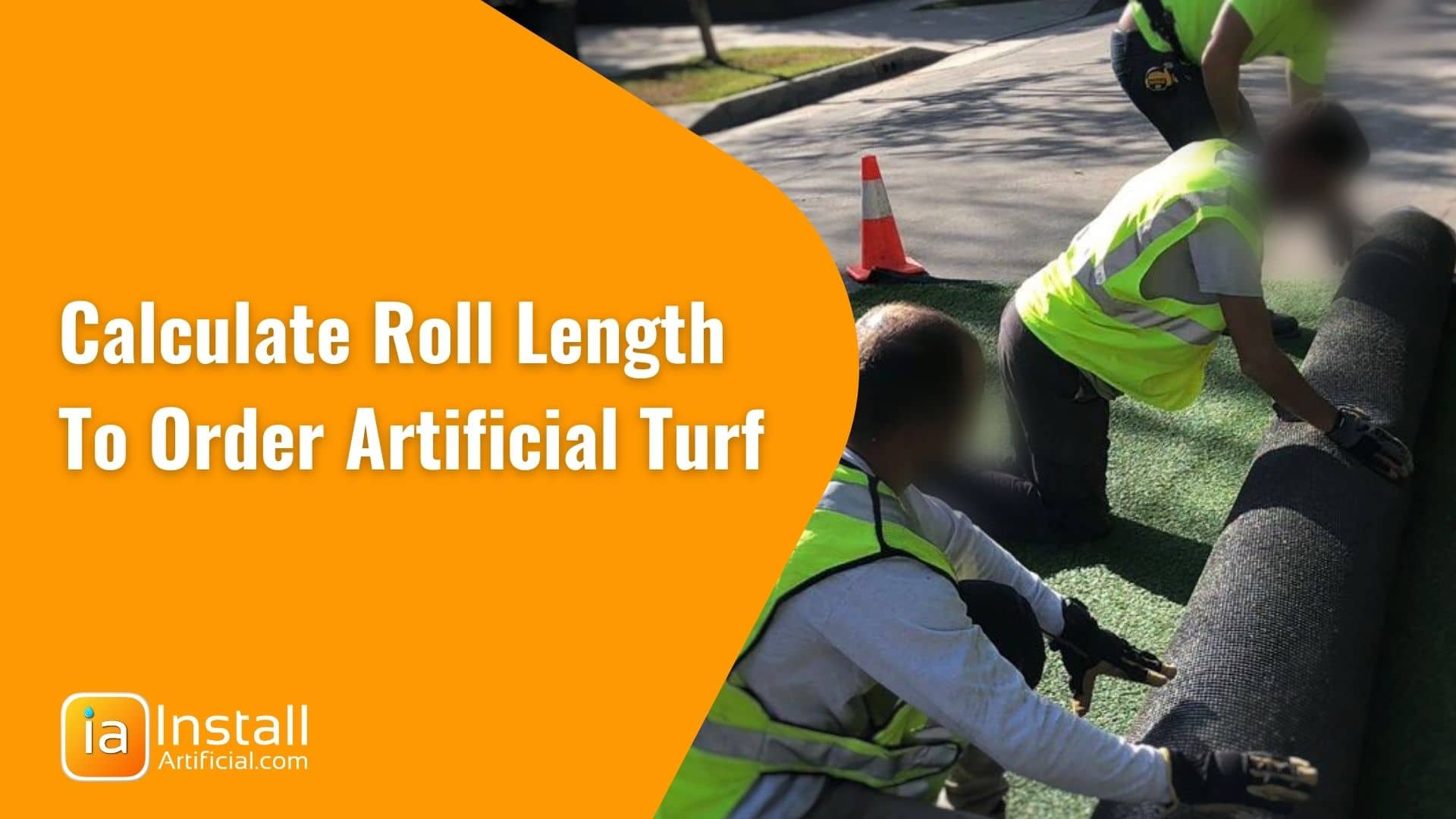
When calculating sq. footage please consider the following:
Unfortunately, you can't buy fully custom-sized cuts of turf. Most of the time artificial grass is manufactured in 15 ft. wide rolls. Because of this, you'll either have to get creative with how you buy your pieces and seam multiple together, or you'll end up purchasing more than needed and cutting to the size of your space. For most projects, it's estimated that there will be at least 10% of waste material.
You'll want to make sure that when you're calculating the artificial turf roll size all of the artificial grass will be facing in the same direction in every area. Artificial turf has a vivid blade direction and will look patchy if you don't pay attention to this.
Often to the naked eye, you can look at spaces and assume they're perfectly rectangular. In actuality, the corners do not create a perfect 90-degree angle. Adding 1 foot to each end of your measurements will help ensure that you're in the clear for any measurement mishaps or awkward angles.
Note: Cutting compact turf or sports turf with a 5mm pad is tricky. In this scenario, cut the rolls approximately, lay them down, and only then make the exact cut. This will help guarantee a clean straight line in long runs of sports turf.
During the turf manufacturing process, we usually find that one side of the roll is smashed a bit more than the rest and doesn't have the same look as the rest of the roll. During our professional installations, we cut away about 5 stitches from the sides to seam invisibly. If you connect the rolls as-is, you may see a visible line. So for example: if your space is 14.5 feet long order 15 ft. just to give yourself some room for removing if needed.
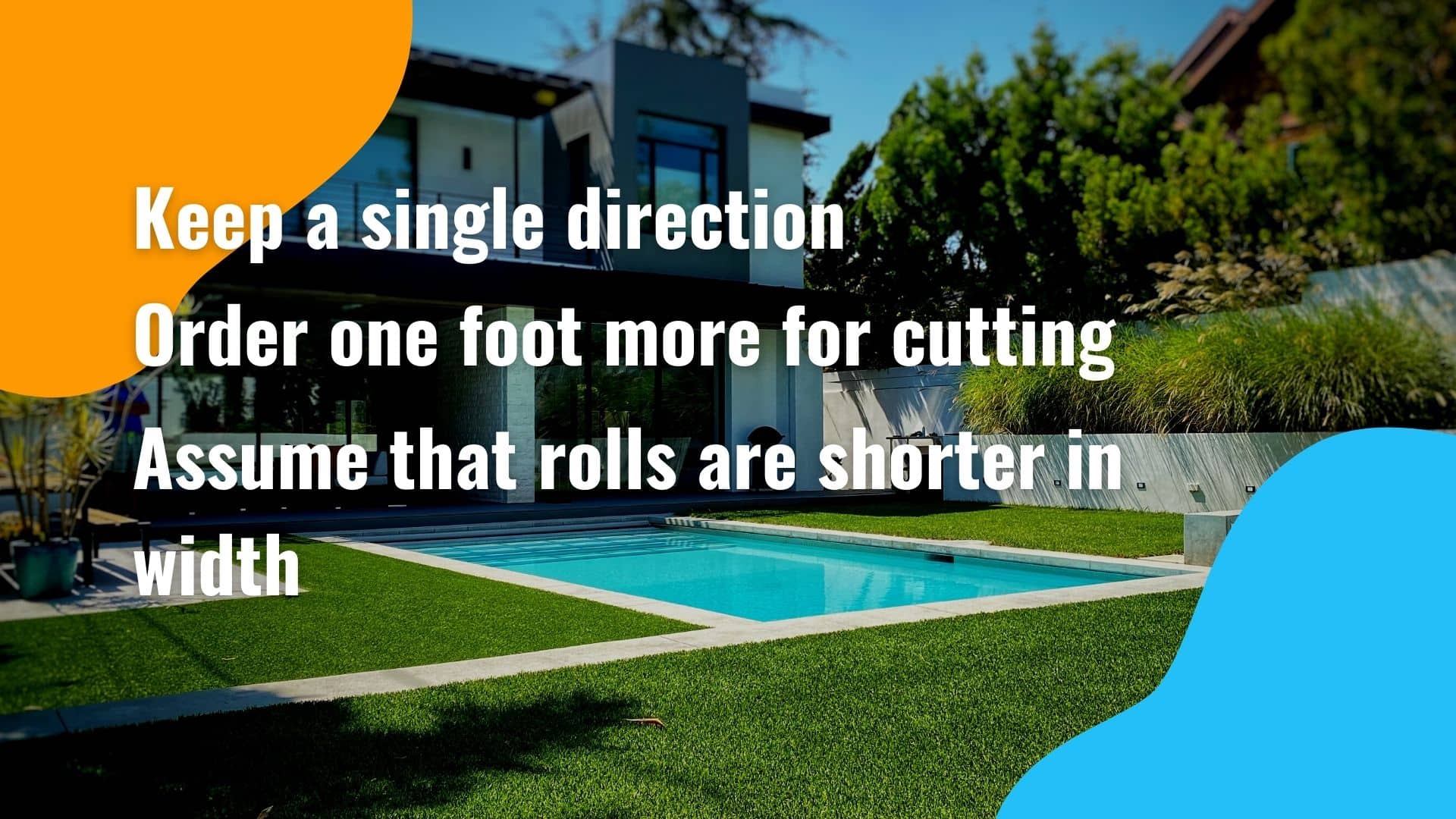
While many don't consider hauling and delivery when calculating roll lengths, it's something to keep in mind. Most suppliers will drop the turf curbside, and it will be your responsibility to haul the artificial grass onto your property from there. The optimal roll length will depend on the type of project:
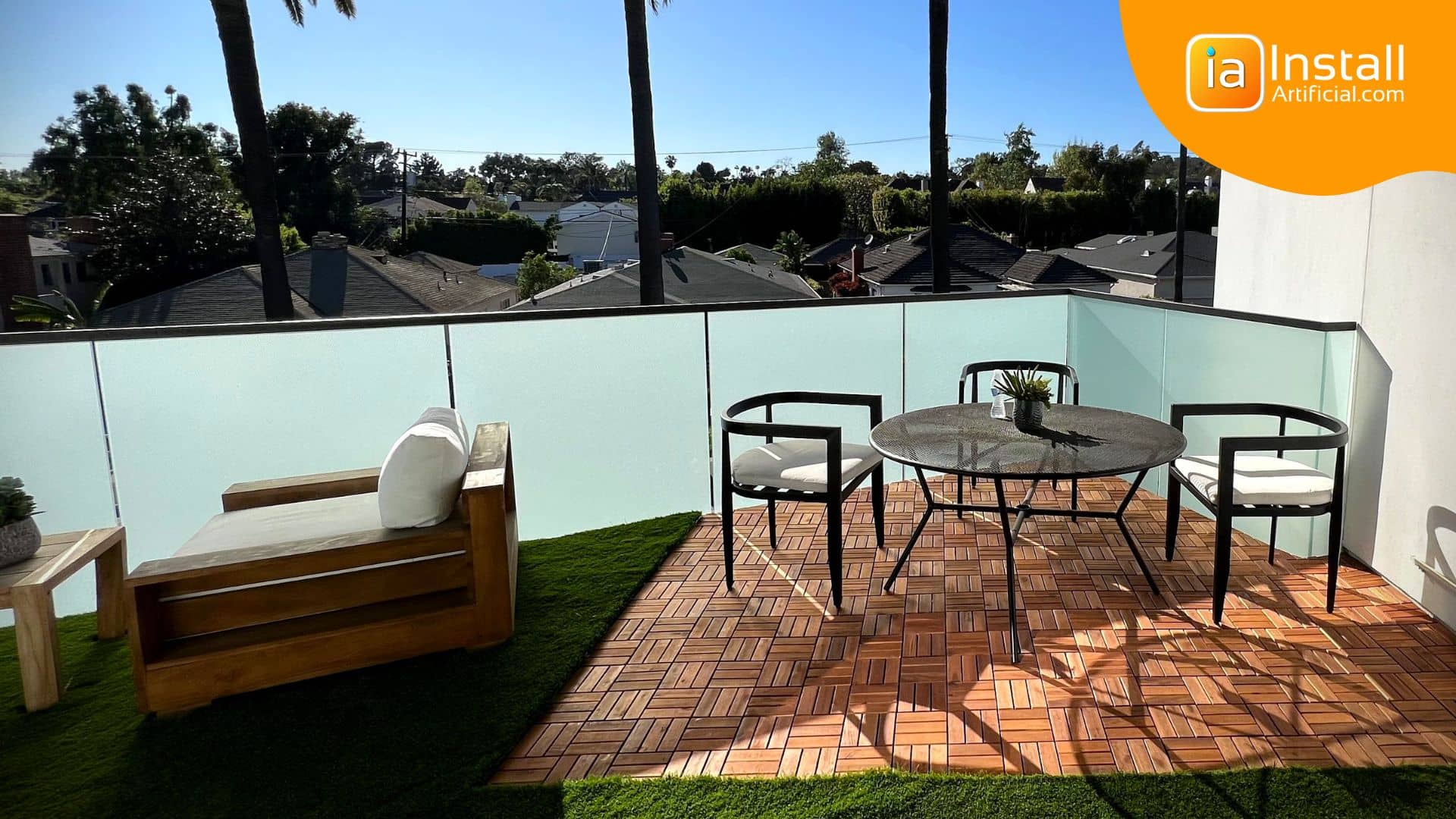
In these scenarios, we recommend keeping the artificial grass rolls under 20 ft. in length. While this may require more seaming in the long run, it will make carrying the turf through the home much easier. With larger turf rolls, you'll have trouble carrying them upstairs, through doorways, and may end up with damage to walls and shelving.
For easy moving through your residence, we often even suggest cutting the turf rolls in half width-wise. Additionally, it is a good idea to wrap the turf in a protective cover before carrying it inside. This will help prevent any damage to your home during the transportation process.
Outdoor projects are easier in terms of hauling turf rolls. However, a roll that is over 50 ft in length may not fit into a typical 36-inch door opening. Often backyard gates are even more narrow than this when you factor in the poles and the door itself. Measure your access entrance prior to ordering the material to ensure this isn't a problem you will run into.
Longer pieces are also usually more difficult to seam together, especially when the surface is not fully flat. For these reasons, we tend to stay under 50 ft. in length whenever possible.
We cannot be responsible for deciding how much turf you need. When you buy artificial grass, the purchase is typically non-refundable and suppliers won't advise on how much is needed. We'll rely on your measurements and calculations which is why it's important to measure your space multiple times.
Below we will list some typical cases and explain how we would order material to install artificial grass in the easiest and most efficient way! As a reminder, you should measure seven times and cut once. We cannot be held responsible for your cuts.
Putting green turf and gym turf may resemble a luxurious carpet at first glance. However, it's important to note that these materials have a specific direction. While the direction might not be immediately noticeable, there is a slight tilt caused by the way the material is rolled. If you were to seam these turf pieces together in alternating directions, the seams would be clearly visible. So, when installing putting green turf or gym turf, make sure to keep the direction consistent for a seamless and professional look.
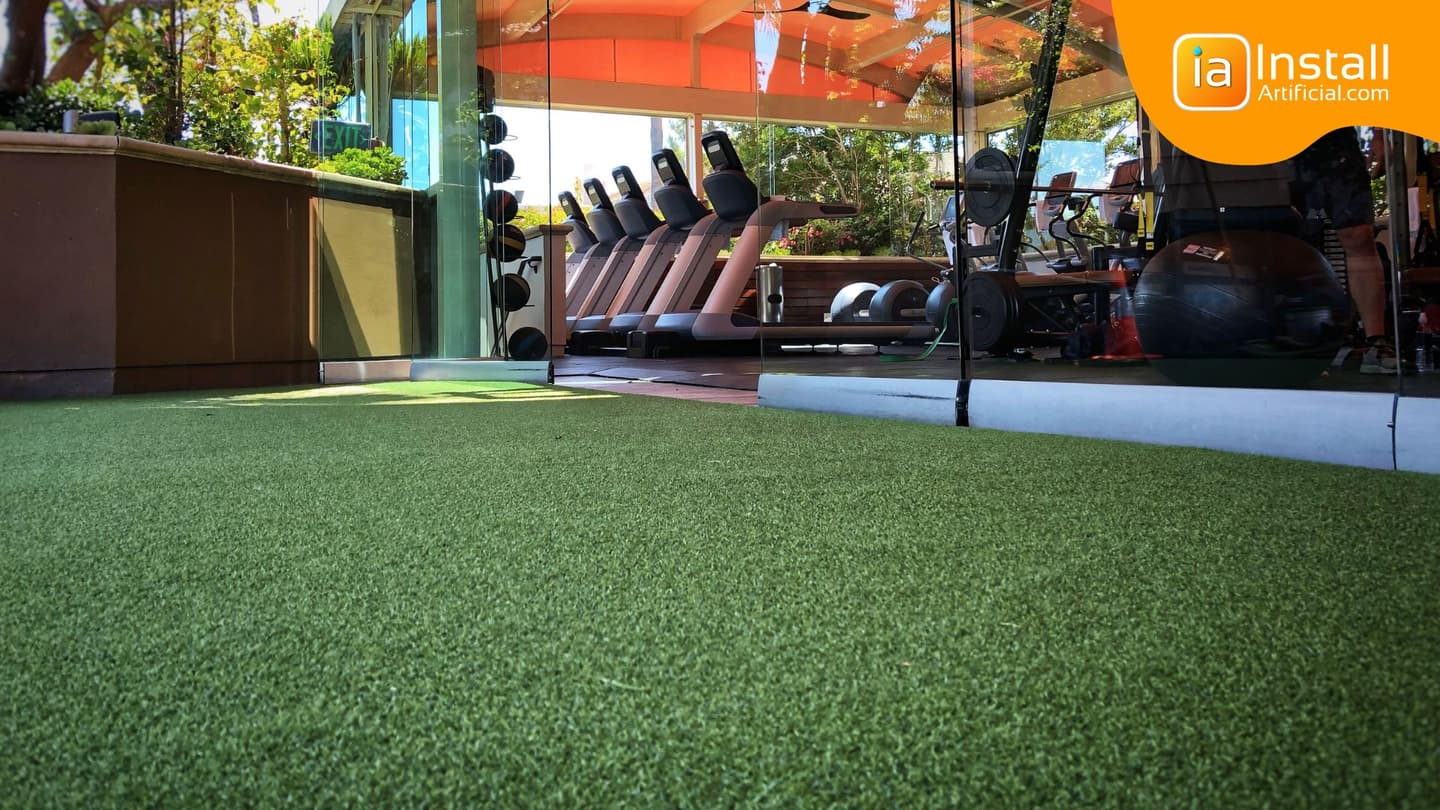
When it comes to gym turf, it's crucial to seam it in one direction, particularly in high-traffic areas or places where pushing heavy sleds may occur. Professional installers will usually order extra material to minimize seams and ensure a seamless and professional look. This approach not only results in easier installation but also allows for the repurposing of any leftover material in other areas.
When it comes to DIY gym turf installation, we highly recommend purchasing extra material. This not only allows for easier repurposing of leftovers, but it also heavily simplify the process. Instead of trying to seam together multiple pieces, it's much more efficient to buy a single, larger piece. It can be challenging to achieve a clean and precise cut on these low pile materials. So, make your life easier and opt for a single piece of turf.
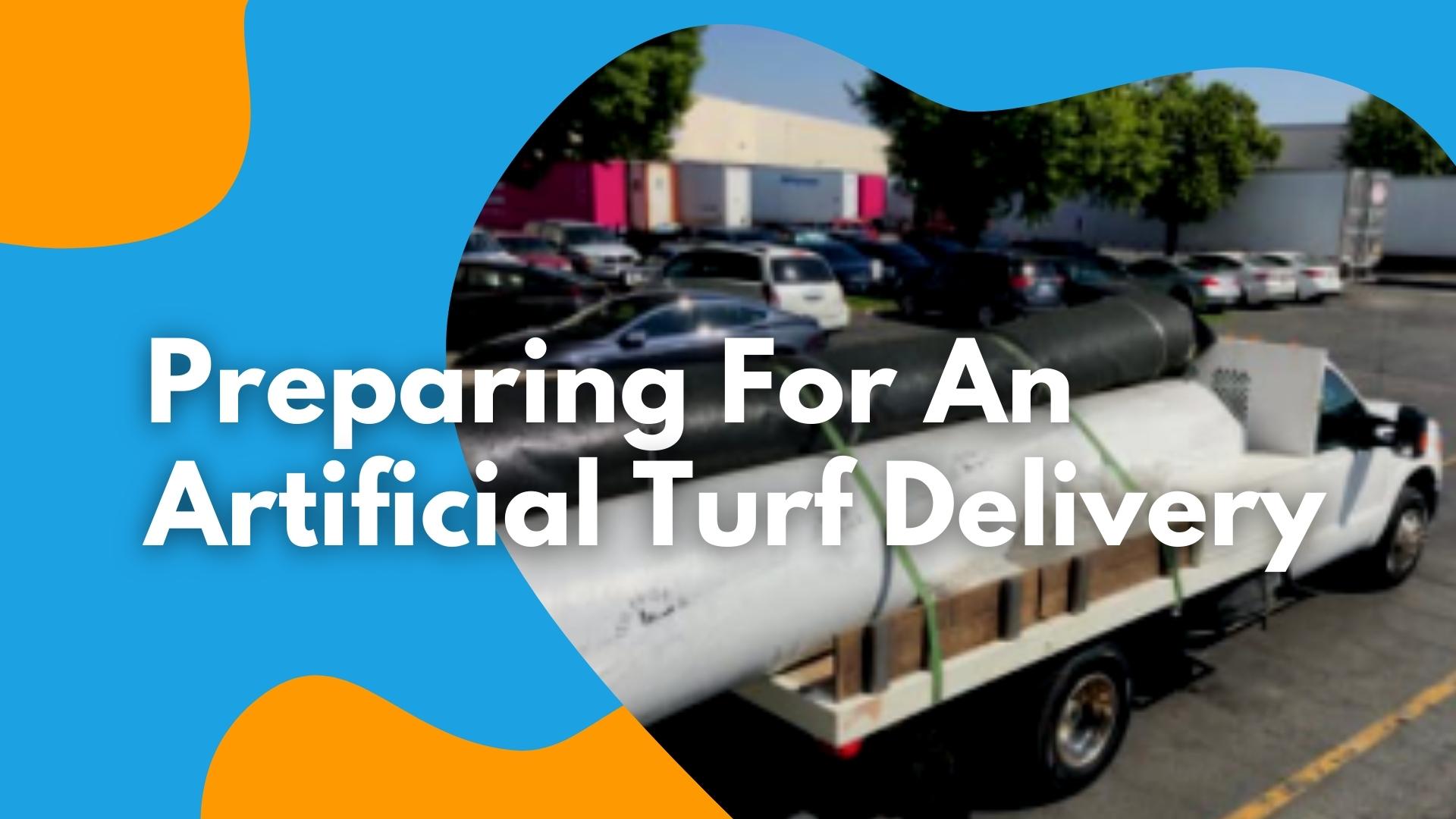
Our biggest recommendation: Hire professional movers or turf installers. We do not recommend hauling heavy materials on your own. Turf is very heavy and can cause injury. If you decide to DIY, be careful! Pay attention to how you're lifting to prevent injuries.
Not sure if all the work is worth the risk? Request an estimate for a professional installation below!
Artificial grass is usually delivered on a flatbed truck such as F450. A driver will push the roll off the side. The turf roll will fall on the ground curbside next to the vehicle. This is as much assistance as you'll receive during drop-off.
Alone, a driver will not be able to move the roll. If the roll is shorter than 30 ft, the driver can possibly roll it a few ft near the driveway. However, this is pretty much as good as it gets. Bottom line is, if you're buying artificial grass yourself for a DIY turf installation, be prepared to haul it yourself.
Determining the amount of turf needed for your project involves a few simple steps:
1. Measure the Area: Start by measuring the length and width of the area where you plan to install the turf. This will give you the basic dimensions.
2. Multiply the Dimensions: Multiply the length by the width to calculate the total square footage of the area. This will give you an idea of how much turf you'll need to cover the space.
3. Account for Shape: If the area is not a perfect rectangle, you may need to divide it into smaller sections and calculate their square footage individually. Then, add up the square footage of each section to get the total square footage.
4. Add Waste: To account for cuts and shaping during installation, it's recommended to add around 5-10% extra to the total square footage. This will ensure that you have enough turf to cover any unexpected areas or mistakes.
5. Consider That the Rolls Must be 15 ft. Wide: Now that you know your dimensions and have added excess to account for measuring mishaps, keep in mind that the rolls must be 15 ft. wide. Because of this, often you'll have to purchase more than needed and cut to size.
Turf is commonly measured using square feet (sq ft) or square meters (sq m), depending on the local unit of measurement.
When dealing with irregularly shaped areas, it is helpful to divide them into smaller sections that have simpler shapes such as rectangles or triangles. By calculating the square footage of each individual section and then adding them together, you can determine the total square footage. You'll then need to determine the roll dimensions needed while keeping in mind that the rolls are manufactured at 15 ft. wide.
Seams are created when different rolls of turf are joined together. It's important to account for the seams when calculating the total square footage needed for your project. To ensure you have enough material, it's recommended to have a 1 ft. overlap between the rolls. Take into consideration the length of each roll when determining the number of seams required.
While there are several online turf calculators available to assist you in estimating the amount of turf needed based on your dimensions, it is always beneficial to have a good understanding of the calculation process for accurate results. So, take the time to familiarize yourself with the process and ensure the accuracy of your measurements.
Typically you'll have to order turf by the roll, but there may be certain suppliers that offer cut pieces. Although you can customize the length of the roll, most suppliers manufacture turf at a width of 15 ft. Keep in mind that ordering full rolls can offer cost savings and help minimize the number of seams in your installation.
Ready to get started?

So you have decided to finally start pursuing your artificial grass project. But where do you even start? Below, we will walk you through some dos and don'ts when...

Making the switch to artificial turf that's pet-friendly? Installing it yourself at home? We've created a DIY guide to assist you with your pet turf installation! It...